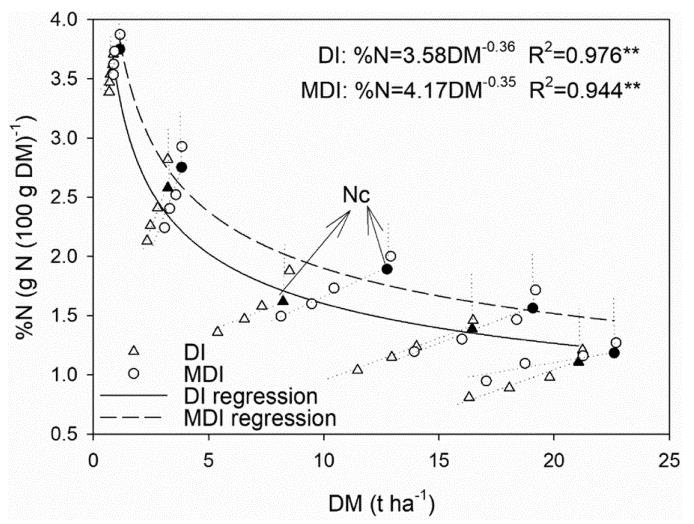Critical Nitrogen Dilution Curve Assists to Diagnose Nutrient Status for Mulched Drip-Irrigated Maize
Updatetime:2021-03-15From:
【Enlarge】【Reduce】
Mulched drip irrigation (MDI) can improve soil hydrothermal condition and realize accurate supplement of soil water and nitrogen (N), which showed a widely application prospect for agricultural production in cold and arid regions.
However, precision supplement of soil water and nitrogen does not mean effective supplement. Therefore, how to diagnose crops nutrient status under mulched drip irrigation is a scientific issue that scholars focused on.
Recently, researchers from Northwest Institute of Eco-Environment and Resources (NIEER) of Chinese Academy of Sciences (CAS) used nitrogen nutrition index (NNI) to diagnose nitrogen status for drip-irrigated maize with and without plastic mulch.
The results showed that critical nitrogen dilution curves (CNDC) can be used to correctly determine N application rates for both mulched and non-mulched drip-irrigated maize.
Besides, Results also indicated that plastic film mulching affected CNDC of drip irrigated maize by increasing dry biomass (DM), thus lowering root to shoot ratio.
Mulching lowered nitrogen nutrition index at silking stage and increased it at physiological maturity stage, it would be beneficial to accumulation and transport of photosynthate to the grain.
The results above can provide guidance for nitrogen management of mulched drip-irrigated maize. This study has been published with title of “Plastic film mulching affects the critical nitrogen dilution curve of drip-irrigated maize” in the journal of Field Crops Research.
This work was founded by the "Light of West China" Program of the Chinese Academy of Sciences (CAS), the Strategic Priority Research Program of the CAS, and the State Key Program of National Natural Science of China.

The critical N dilution curve of drip-irrigated maize with and without plastic film mulching (MDI, DI). (Image by ZHOU Lifeng)
Contact:
ZHOU Lifeng
E-mail: zhoulf@lzb.ac.cn
Linze Inland River Basin Research Station, Chinese Ecosystem Research Network, Northwest Institute of Eco-Environment and Resources, Chinese Academy of Sciences, Lanzhou, China.
Appendix




